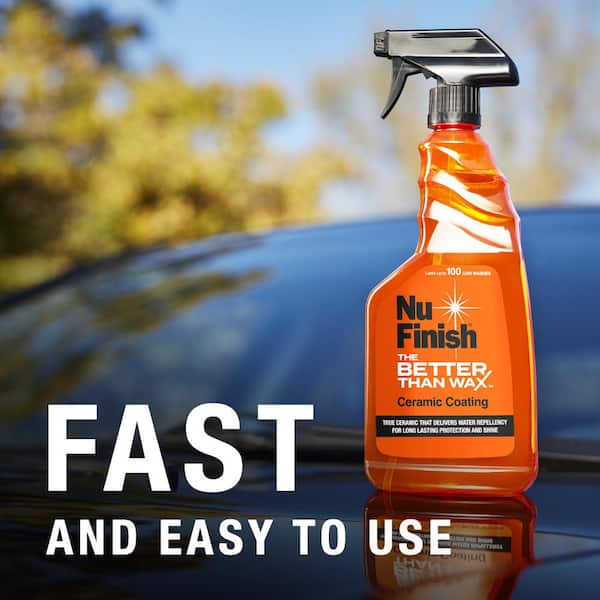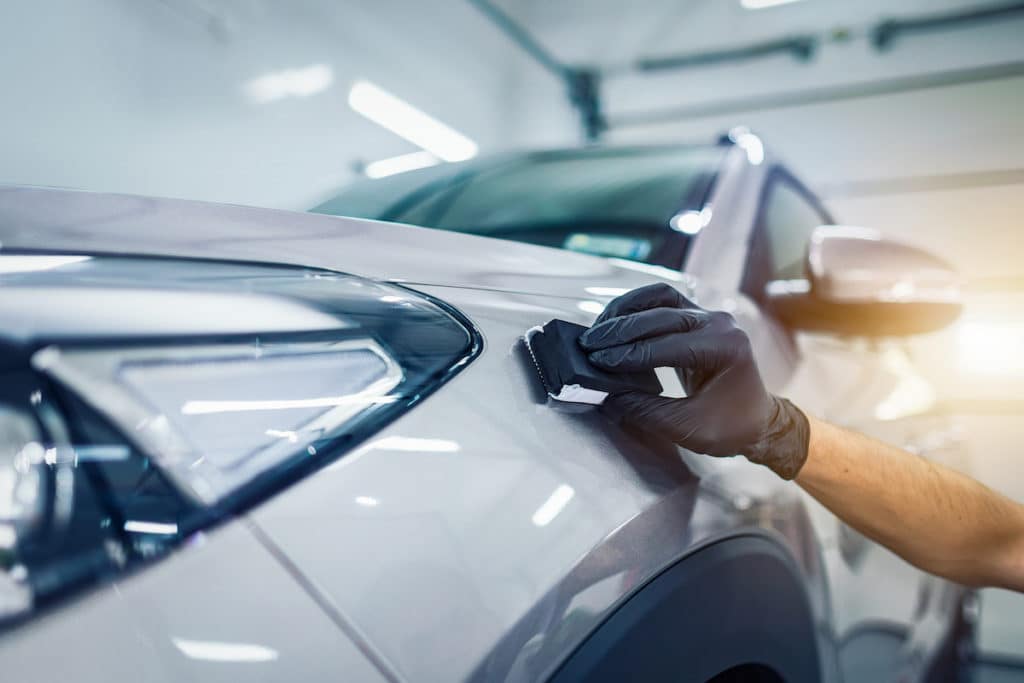Why Ceramic Finishing Is the Ultimate Remedy for a Perfect Complete
Ceramic layer has emerged as a leading remedy for those seeking a remarkable surface for their automobiles, many thanks to its exceptional sturdiness and safety functions. What elements truly established ceramic covering apart?
What Is Ceramic Coating?

When used properly, ceramic finishing develops a hydrophobic surface that wards off water and dust, making it much easier to preserve and cleanse. Unlike conventional waxes or sealants, which normally provide temporary defense, ceramic coverings can last for several years, depending upon the product quality and application technique. The process of using ceramic coating needs precise prep work, including comprehensive cleaning and sometimes paint correction, to guarantee optimal bonding and effectiveness.
Ceramic coverings are not restricted to auto surfaces; they can also be used on different products, consisting of glass, steel, and plastics, offering a functional service for boosting protection. On the whole, ceramic layer represents a significant innovation in surface area protection innovation, integrating both visual and functional benefits for a wide variety of applications.
Advantages of Ceramic Layer
While many surface area security options exist, the advantages of ceramic coating stand out as a result of its special properties and resilient performance. One of the primary advantages is its phenomenal longevity. Ceramic Coating Philadelphia. Unlike standard wax or sealants that call for constant reapplication, ceramic coatings offer a durable layer that can last for numerous years, dramatically decreasing maintenance efforts
Another notable advantage is boosted protection versus environmental contaminants. Ceramic layers develop a hydrophobic surface that repels water, dust, and different pollutants, making it less complicated to clean up. This function not just protects the car's look however additionally decreases the danger of corrosion and oxidation, especially in rough climate condition.
Furthermore, ceramic finishings offer premium resistance to UV rays, stopping fading and degradation of paint gradually. This UV protection is vital for preserving the aesthetic worth of cars and surface areas exposed to direct sunshine.
Additionally, the shiny surface achieved with ceramic layer improves the overall visual charm, providing surface areas a showroom-quality sparkle. On the whole, ceramic coatings represent a significant advancement in surface security modern technology, supplying long-lasting benefits that deal with both practical and visual requirements.
Just How It Works
Understanding the science behind ceramic coverings reveals exactly how they offer such impressive protection and durability. At its core, a ceramic layer is a liquid polymer that chemically bonds with the car's manufacturing facility paint.
The application process includes numerous actions, consisting of surface prep work, which is essential to attaining ideal adhesion. As soon as used, the finish undergoes a treating process, throughout which it sets and creates a semi-permanent bond with the paint surface. This bond is what differentiates ceramic coatings from traditional waxes and sealers, offering a longer-lasting safety barrier that can sustain for many years.
In addition, the thickness of the covering can improve its protective high qualities, ensuring that it can withstand severe conditions. Eventually, the scientific research of ceramic layers combines innovative materials with innovative application methods to deliver an unparalleled degree of defense and visual enhancement for cars.
Comparison With Standard Approaches
When contrasted to conventional paint security techniques such as waxes and sealants,The benefits of ceramic coverings end up being particularly obvious. While waxes use a temporary luster, generally lasting a couple of weeks to a couple of why not check here months, ceramic finishes give a long-lasting safety layer that can withstand for numerous years. This toughness substantially lowers the regularity of reapplication, making ceramic coatings a more affordable service with time.
Furthermore, traditional methods typically require considerable preparation and numerous applications to attain an acceptable degree of defense. In comparison, ceramic coatings bond at a molecular degree with the car's surface area, producing a durable guard versus environmental pollutants like UV rays, acid rain, and road salts. This bond boosts the automobile's resistance to scratches and swirl marks, which are common with conventional waxes and sealants.
Furthermore, the hydrophobic buildings of ceramic finishings fend off water and dirt, bring about less complicated cleaning and maintenance. On the other hand, wax and sealant-treated surface areas can attract gunk, necessitating even more constant washing - Ceramic Coating Philadelphia. On the whole, ceramic try this website coverings not just give superior defense however also provide an extra aesthetically attractive and long-lasting coating, establishing them as the recommended option for discerning vehicle owners
Application and Upkeep Tips

Making use of a foam applicator, apply the layer in tiny areas, adhering to the maker's guidelines relating to thickness and overlap. Enable sufficient healing time in between layers, commonly 24 hours, to ensure proper bonding. After application, it is vital to avoid exposure to water or extreme elements for a minimum of a week to enable the covering to totally cure.
Additionally, using a ceramic maintenance spray can boost the layer's hydrophobic homes and longevity. Routine evaluations for any kind of signs of wear will official site help maintain the finishing's stability and maintain that beautiful coating.
Conclusion
In conclusion, ceramic coating arises as a remarkable alternative for accomplishing a perfect automotive finish. By forming a durable bond with factory paint, ceramic coating effectively shields versus scratches, UV rays, and ecological contaminants.

Comments on “Long-Term Results with Expert Ceramic Coating Philadelphia Applications”